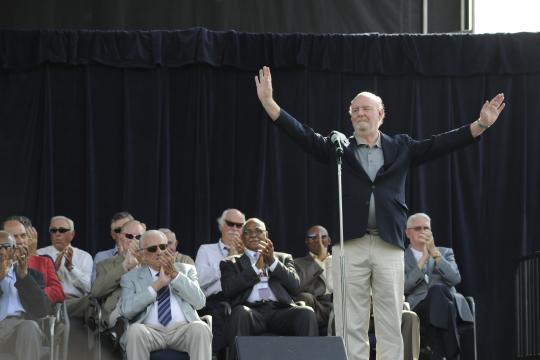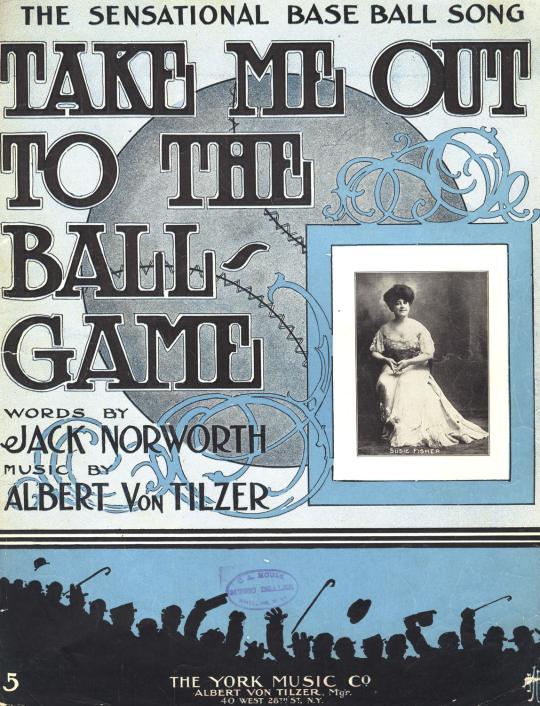Stadium Symphonies
Nearly every notable American musician since has taken a turn at the anthem, offering renditions that are orchestral, operatic, jazz, rock, folk, and country. No one, however, has done it better than the late Robert Merrill, the Metropolitan Opera singer who first graced Yankee Stadium with his version at the Yankees’ 1969 home opener. And while most struggle with the song’s extreme vocal range, any off-key moments are immediately forgotten – or at least forgiven – once the umpire bellows: “Play Ball.”
From the first pitch until the last out (and even beyond), ballpark music-makers have changed the way fans experience games. Organists have long provided that musical backdrop, sometimes striking just a few notes to comment on the action on the field. As a rookie organist for the Milwaukee Braves, Jane Jarvis spontaneously played “Where, Oh Where, Has My Little Dog Gone?” when a member of the grounds crew got trapped under a tarp and tried to wiggle free. During an 11-0 blowout, the Dodgers’ Nancy Hefley turned to “Let’s Call the Whole Thing Off.”
Over time, organists began playing songs to introduce players – starting with relievers entering close games. Sparky Lyle, the old Yankees fireman, entered games to “Pomp and Circumstance.” Mets reliever Tug McGraw – father of Tim, to younger fans – bounced into games, slapping his thigh to an Irish jig.
Organ music began to slowly give ground after the Orioles started playing rock tunes in 1975. Better sound systems hastened the process. Even more important were the huge scoreboards, which the Dodgers pioneered in 1980. Modern fans now crane their necks to watch highlights, replays, bloopers, fan cams, and faux dot races as part of a complete audio-visual experience. In stadium after stadium, organists found themselves in a battle for airtime against a mix of performers that ranged from John Denver to Metallica.
Old-timers have grumbled that canned music robs the game of a spontaneous and gentle feel. Teams now write scripts, dozens of pages long, for the day’s music and video entertainment. So what room remains for spontaneity?
The groundkeepers at Yankee Stadium have offered a joyous rebuke to those grousers. When they dragged the infield for a Spring Training game in 1996, they danced and gyrated to the Village People’s “Y.M.C.A.” The song transformed the spirit of a lackluster Grapefruit League contest, and the Yankees brought the act north. It has become an institution at the stadium, with thousands of fans spelling out the letters along with the grounds crew.
As Bill Murray finished his sing-along, he practically fell out of the announcer’s booth as he shouted: “Now! Let’s! Get! Some! Runs!”
That’s music every fan wants to hear.
Charles Euchner, a case writer at Yale School of Management, is the author of "The Last Nine Innings" and "Little League, Big Dreams."









